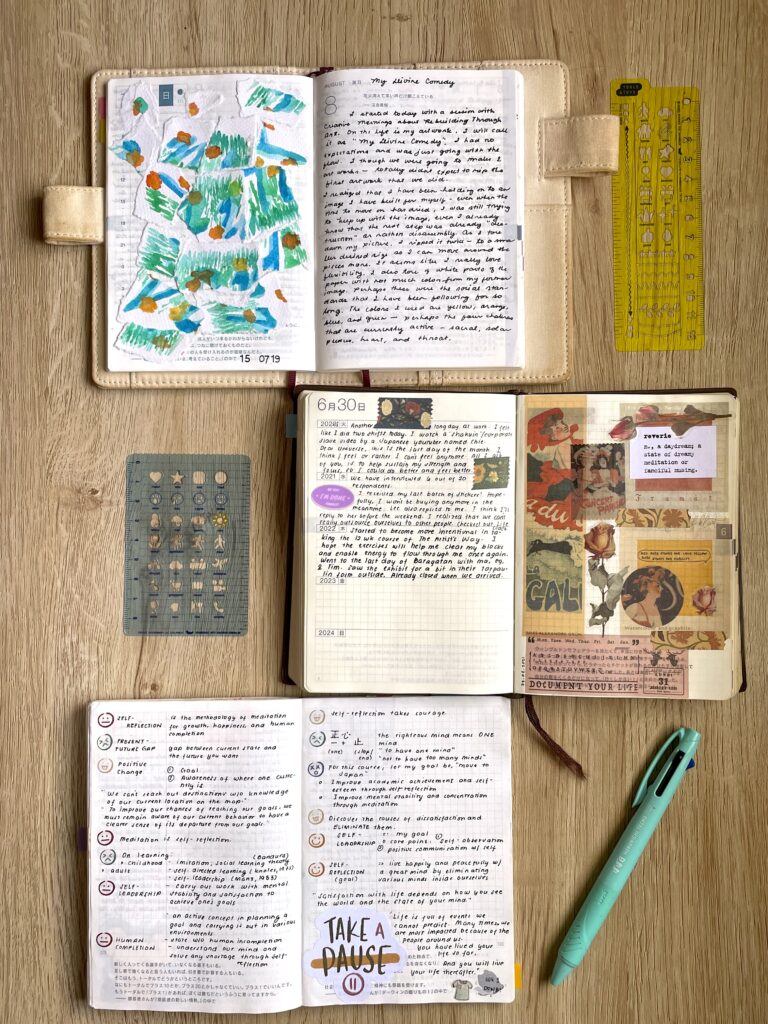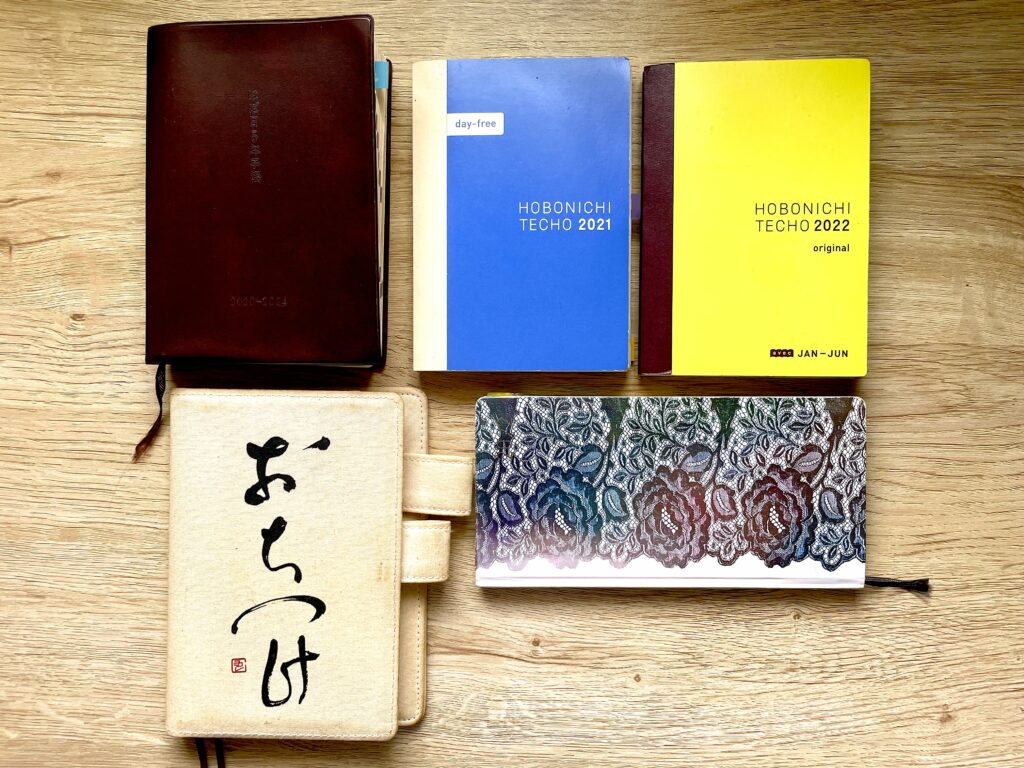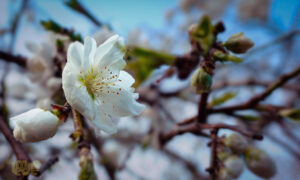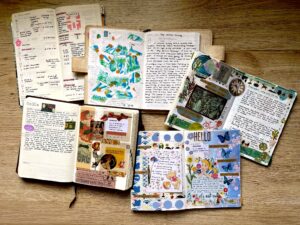What I Learned When I Started Using A Techo
words and photos by Hasmin Dela Pena
Moving back to my hometown in 2018, away from all the cultural activities of the Metro and our one-flight-away-to-Japan neighbor NAIA, I encountered the Hobonichi Techo from a friend’s online selling post. Simply put, a techo (手帳) is a notebook or a diary.
I searched for how a Japanese techo is used. I saw different online communities surrounding a particular brand and the techo culture which emerged from it. These groups were flourishing with creative journal enthusiasts, functional planners, and practicing artists, among others.
Creating my own life book. With this line, the Hobonichi Techo appealed to me. Sometimes, I have thoughts like “I felt like I did not feel a certain day or month pass by”. Now that I plan to acquire my own “life book”, I shall be able to challenge these thoughts through the records in the techo.
2020 was a very challenging year. In a timely manner, I happened to order the “5-Year” techo to start my Hobonichi journey. Practically, I found it as a sulit or a value-for-money keepsake journal for my milestone birthday that I can use in the next 5 years. With a few lines to fill up that even one sentence a day can suffice, I was sure that I can write at least three things that I am grateful for everyday.
There were days, weeks, or even months, that one line proved “difficult” to write. Whether the reason was because I was too tired, I did not have time, or simply because I forgot, that even after trying to recall with the guide of photos or daily online stories, some days were just left unrecorded. This made me reflect on how to do better – the next day, the next week, the next month, even the next year. I got better with consistency when the second year came for the 5-year journal as I found it amusing to see where I was a year before compared to the current year. If you are doing a similar 5-year journal, do not despair on missing days for the first year. You will definitely pick up on it.

The following year, a new techo was launched, it was called the “Day-Free” – perfect for new users who want to try the techo experience without being daunted to do it daily and to just write on any day you feel like it. This served as the second techo in my collection. I used it as a journal for self-reflection and creative journaling, scrapbook style – using stickers, small paper mementos, and other paper craft. I also bought my first techo cover, one of the most anticipated products Hobonichi enthusiasts look forward to annually. I chose a cover design from the 2020 line-up – ochitsuke, meaning “stay calm”.
Learning from the community of creative journaling enthusiasts, I joined journaling challenges hosted by other creators. I love how these exercises challenged me to think visually instead of just plainly writing down thoughts in prose or essay form. I am telling you now that the feeling of peeling a sticker and sticking it on another piece of paper feels so relaxing. It releases some sort of tension every time I do it.
Enjoying my previous techos more on the creative side, I entered my third year with the intention of functionality. I now felt that I was ready to fill up techos with bigger spaces for daily pages. I finally eased myself into buying the original Hobonichi (A6 size), in Avec, meaning, as two separate books from January to June and July to December. In the first semester, I used the techo in a variety of ways: long-hand writing, creative journaling, planning, and for visualizing. For the next semester, I dedicated it as my creativity journal where I wrote daily in a stream of consciousness way. Likewise, I secured myself a Weeks for planning, the fourth type of techo I own. My Weeks contained calendar event activities, deadlines, work tasks, personal tasks, and daily habits.
I also learned about techokaigi from the community. It is the practice of reflecting or reviewing the techo usage, i.e., whether the initial intended purpose still currently servies what it was supposed to do. This is usually conducted by people who possess multiple planners and journals. I on the other hand, have three techos with clear intended usage: the 5-year journal, now happily on a 2.5 year gratitude journal, the 2022 July – December A6 Avec as my creativity journal, and lastly, the 2022 Weeks for daily and weekly planning.

The Everyday, Every Way Techo
In my experience, the Hobonichi Techo has mastered the art of making the artist return – to return to the blank pages and fill it up with something. The blank pages have urged me again and again to continue writing, even in months of having not written anything; to continue planning even on weeks of non-planning; to continue creating, even on periods of non-creation. I myself have fallen into such days, weeks, even months of nothing. I tell myself that a missed day is still an entry – an entry of a pause or a break. Sometimes we just need a dependable tool that can lure us back into the habit and not feel guilty about the missed days.
As my personal cheerleader – the techo, for now, the Hobonichi Techo, is a Japanese cultural product that accompanies me in my daily life. I started using the techo to simply record everyday gratitude, then expanded to explore freely on creative journaling, and then moved forward to experiment on a more structured rhythm for better everyday living. I look forward to the possibilities that the techo will offer in the future. I, for one, would love to try it as a canvas to practice illustration and watercolor, as I have seen others have already done.
Editor’s Note:
I’m a paper planner user. Many times, I have tried scheduling and task management apps to manage my work schedule, my personal schedule, (and sometimes even my boss’s and my family members’ schedules!), I have tried to manage them in a “smart” way. But in the end, I couldn’t escape the feeling of “I felt like I did not feel a certain day or month pass by.”
Places I’ve been, people I’ve met, conversations and feelings I’ve had…when I store them in digital form on an “external storage device”, I feel like that they no longer belong to me, but become like a scoop of sea water in an ocean of information, or a grain of sand on an endless beach. It feels as if it can never bring them back to me again.
Unlike a computer or a smartphone, my notebook does not take time to wake up, nor does it trust me to ask for a password to open it. (Although occasionally, it takes me a while to get to the page I want to see.) It is, without fail, in my handwriting, a record of my actions and feelings in a way that connects them to my body and thoughts.
The cover is black, the size fits in the pocket of my work jacket, the contents are black and white, mostly boring work schedules. There are no colorful drawings, woven poetries, and the notebook is far from “creative.”
But that “life book” surely records my days and tells me that each day passes well and that my life is moving forward.
– Wataru Abe, JFM Assistant Director for Arts and Culture







